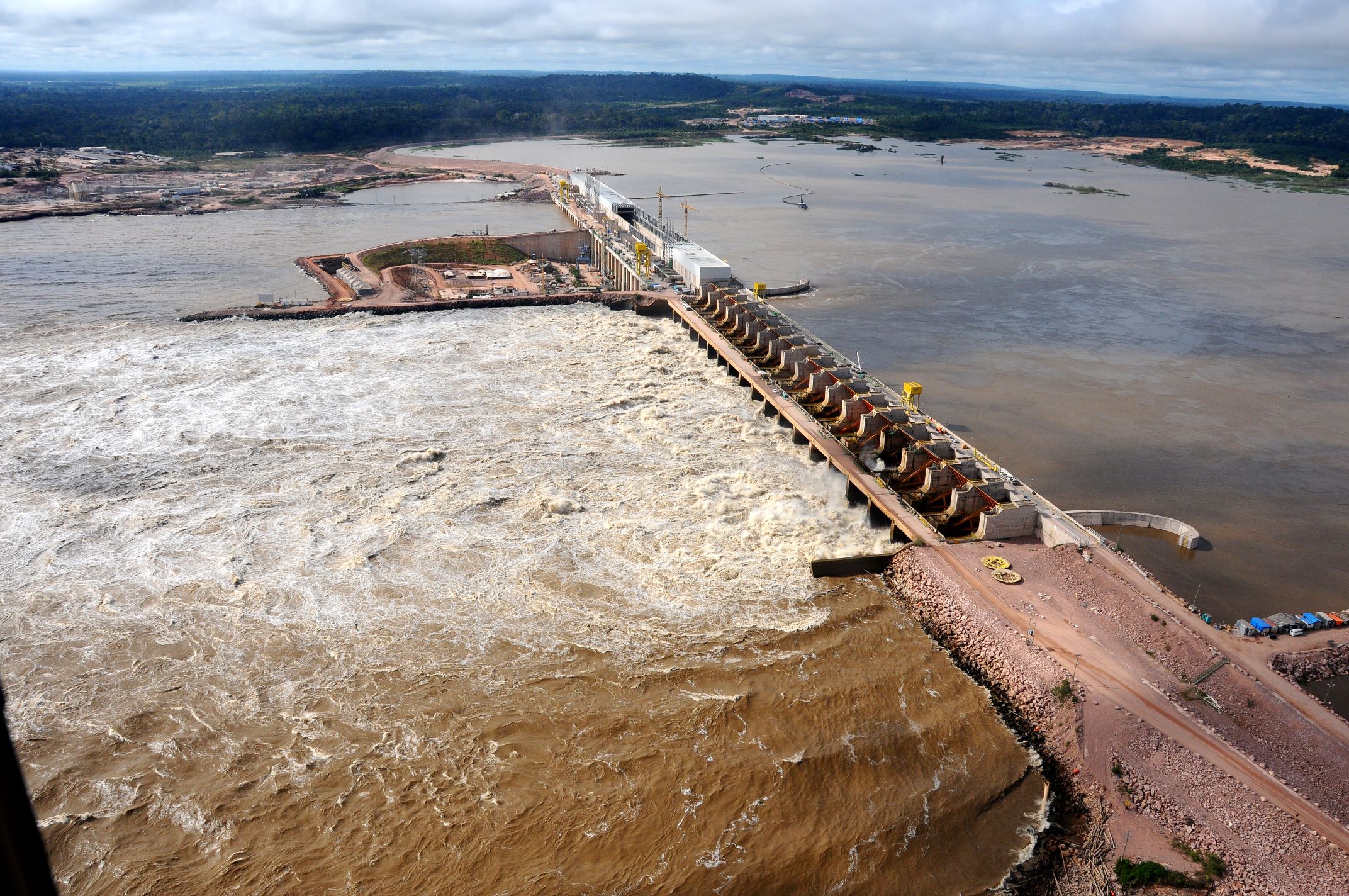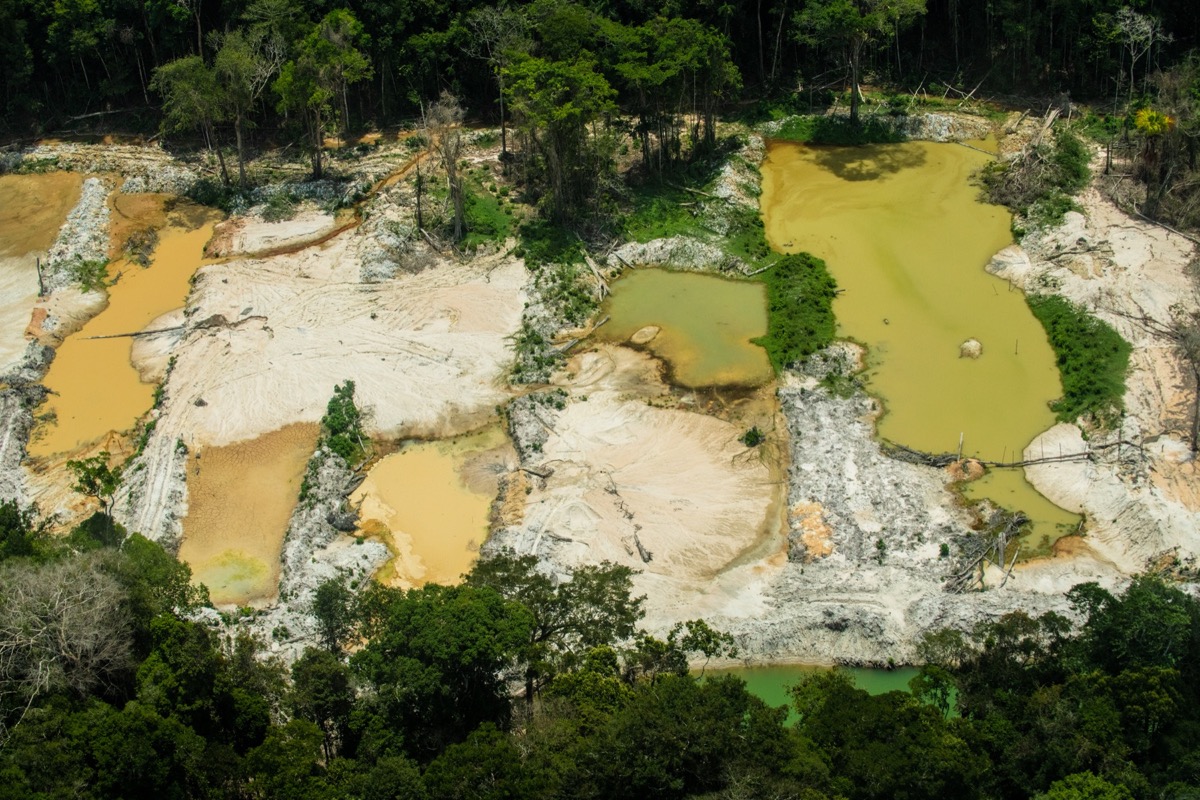- Mongabay is publishing a new edition of the book, “A Perfect Storm in the Amazon,” in short installments and in three languages: Spanish, English and Portuguese.
- Author Timothy J. Killeen is an academic and expert who, since the 1980s, has studied the rainforests of Brazil and Bolivia, where he lived for more than 35 years.
- Chronicling the efforts of nine Amazonian countries to curb deforestation, this edition provides an overview of the topics most relevant to the conservation of the region’s biodiversity, ecosystem services and Indigenous cultures, as well as a description of the conventional and sustainable development models that are vying for space within the regional economy.
- This is part of chapter 1 of “A Perfect Storm in the Amazon,” see the bottom of this page for links to all the excerpts.
The Pan Amazon nations have constitutions that were reformed or rewritten in the last decades of the twentieth century. Previous versions either ignored nature or incorporated a simple clause assigning the state the ‘duty’ to protect [or improve] the environment. Brazil’s constitution of 1988 was radically different: ten separate articles address nature conservation or environmental management by declaring that access to a healthy environment is a basic human right. The reformed national charters of Colombia (1991), Peru (1993), Bolivia (1994, 2009), Venezuela (1999) and Ecuador (2008) all include mandates to enact environmental legislation and create environmental ministries. Ecuador’s is the most emphatic, stating that Mother Nature (Pachamama) has rights that must be honored by human society.
Environmental ministries are responsible for developing environmental policy and administering agencies that regulate the public and private use of natural resources. Most share management responsibilities, however, with other agencies that reflect competing domestic agendas. For example, the national forest service is part of the Ministry of Agriculture in Brazil and Peru, while the regulation of water resources is shared with agriculture (Peru) or energy agencies (Brazil) or enshrined as a separate agency (Ecuador). Environmental ministries have well-defined responsibilities to oversee the management of the long-term environmental (brown) liabilities linked to the extractive sector and to review the potential harm from industrial development and infrastructure investments. The stated goal of modern environmental management is to ‘avoid, mitigate or compensate’ the negative effects of modern development.
The Environmental Impact Analysis (EIA) framework was introduced into Latin America in the 1990s, and EIAs are now routinely conducted as part of the due diligence and feasibility planning processes for major industrial or infrastructure investments. Like their counterparts in the advanced economies, these technical documents reflect the conflicting societal pressures between promoters of economic growth and advocates for nature conservation. Their methodologies are far from perfect, but their utilization has vastly diminished harm when compared to the status quo ante.
The Initiative for the Integration of the Regional Infrastructure of South America (IIRSA) has sought to harmonize the EIA processes across the continent, which has improved the technical capacity of environmental ministries and facilitated private sector investment in much needed public infrastructure. Many environmental advocates view them as a greenwash, however, and there is ample objective evidence that the EIA service industry is biased toward the approval and completion of individual projects.

There are few examples of projects that have been canceled due to the discoveries identified in an EIA; instead, developers use the evaluation process to identify and modify specific aspects while ensuring projects move forward to completion.
The limitations of the EIA system led to the development of a complementary approach known as a Strategic Environmental Analysis (SEA) designed to identify alternative development options far out into the future. The SEA is viewed as a way to avoid environmental degradation because it is predicated on the participation of civil society and local communities that would foresee and veto non-sustainable development pathways. There have been three high-profile attempts to conduct an SEA along highway corridors sponsored by IIRSA. In each case, they contributed to the creation of one or more protected areas, but none substantially changed the economic and social forces driving deforestation in the landscapes impacted by those highways.
Another strategic planning methodology embraced by governments is land-use planning that combines information on soil, water and biodiversity with social and economic data to make zoning recommendations for political jurisdictions. This approach was conceived in the 1970s to identify lands appropriate for agriculture but evolved into a more holistic system in the 1990s as governments reacted to the deforestation crisis. Referred to as Zonificación Ecológica Econômica (ZEE), these studies typically recognize the status quo of existing settlements and highways while discouraging development on fragile lands or areas of exceptional ecological or cultural value.

The legal standing of these technical documents varies among countries, but most are aspirational rather than mandatory. Settlers, local elites and entrepreneurs use them to identify land with arable soils but all too often ignore recommendations based on environmental criteria. ZEEs have been used in Brazil and Bolivia to identify areas that were incorporated into protected area systems and to bolster the claims of indigenous or traditional communities.
One of the most conflictive governance issues in the Pan Amazon revolves around forest management. The constitutions of all eight nations establish sovereign (state) control over forest resources. This obviously covers all aspects of the management of public forests, but it also includes the forest resources located within private properties. To observers from cultures that recognize the priority of property rights, this would seem an aberration; nonetheless, it is a fundamental aspect of these nations’ legal systems. Moreover, virtually all of the landholdings within the Amazon were issued (albeit provisional) deeds that recognize this legal principle; consequently, their property rights are clearly circumscribed by precedent and law. Regardless, human nature often supersedes legal tenets, and there is enormous resistance by property owners to comply with rules and regulations emanating from government agencies.
The conflict between private property and forest governance is most evident in the Brazilian government’s attempts to enforce the Forest Code, a landmark regulatory framework first promulgated in 1936 and most recently revised in 2012. The 1965 version established that landholders in the Amazon could clear only twenty per cent of their land for agriculture or ranching and must retain eighty per cent in its natural state. Landholders have the right to exploit forest resources, but they must comply with a variety of management criteria. The Forest Code was blatantly ignored throughout most of the 1970s, 1980s and 1990s, when landholders cleared land in excess of the legal limit, as well as along river corridors that merit special protection.
In 2005, the government of Brazil launched the Plano de Ação para Prevenção e Controle do Desmatamento na Amazônia Legal (Action Plan for Prevention and Control of Deforestation in the Legal Amazon; PPCDAm), an ambitious campaign to bring the combined resources of the Brazilian state, using ‘carrot and stick’ policies, to the reduction of deforestation. Directed from the president’s office, it imposed coordination across ten ministries and a dozen autonomous agencies. Satellites captured accurate and precise data in real time, which law enforcement teams – led by the public prosecutor’s office, with support from police, tax authorities, and the environmental protection agency – used to identify illegal activities.

Simultaneously, the federal government coordinated its actions with state governments to implement a land registration and reporting system that provides landholders with a flexible pathway to remediate past infractions of the Forest Code. Consumer boycotts reinforced these actions, forcing multinational corporations to implement supply chain certification systems eliminating production sourced from properties engaged in illegal activities. Coercive measures were combined with incentives such as technical assistance and financial credit from both public and private entities, measures that increased yields and revenues from previously deforested landscapes via the ‘intensification’ of production instead of the ‘extensification’ of land use.
These PPCDAm and related actions led to an eighty per cent drop in deforestation in the Brazilian Amazon between 2005 and 2012, an astonishing turn of events that led optimists to proclaim that deforestation had been decoupled from agricultural production. The ‘carrot and stick’ incentive system was designed primarily for agribusiness, particularly farmers producing soy and beef for export markets.
The most effective coercive policies excluded smallholders and, consequently, did little to change land-use practices on the most active forest frontiers. Ranchers realised that the government lacked the political will to collect environmental fines and developed workarounds to trade cattle from properties engaged in illegal deforestation. Deforestation increased from a low of 457,000 hectares (1,13 million acres) in 2012 to 976,000 hectares (2.4 million acres) in 2019, a value far below the 2.7 million hectares (6.67 million acres) of deforestation registered in 2004, but analysts forecast the trend will continue in the regulatory environment following the elections of 2019.
The anti-deforestation campaigns in the Andean republics never contemplated an all-of-government effort to reduce deforestation, although, in Peru, a multi-agency task force has used newly implemented monitoring systems to intervene in a few highly publicised incidents. Perhaps more importantly, there are no corresponding global commodity supply chains that might motivate companies, governments, and landholders to change their business practices.
“A Perfect Storm in the Amazon” is a book by Timothy Killeen and contains the author’s viewpoints and analysis. The second edition was published by The White Horse in 2021, under the terms of a Creative Commons license (CC BY 4.0 license).
Read the other excerpted portions of chapter 1 here:
 Chapter 1. The state of the Amazon
Chapter 1. The state of the Amazon
- The state of the Amazon May 31, 2023
- Drivers of environmental degradation in the Amazon June 1, 2023
- The geography of environmental degradation in the Amazon June 7, 2023
- The political economy of the Pan Amazon June 8, 2023
- Understanding the conventional economy of the Pan Amazon June 13, 2023
- The natural history of the Amazon Rainforest June 14, 2023
- Forest ecology and carbon dynamics in the Amazon June 20, 2023
- Climate change and moisture recycling in the Amazon June 22, 2023
- Environmental policy and action on the ground in the Amazon June 27, 2023
- Environmental governance in the Amazon June 28,2023
- The largest land set-aside in history June 29, 2023
- An Indigenous revival in the Pan Amazon July 6,2023
- Monetizing nature: The under-explored power of the Amazon’s natural capital July 7, 2023
- The challenge of the future (and lessons from the recent past) in the Pan Amazon July 12, 2023
- Current policy approaches in the Amazon: certainly necessary, but are they sufficient? July 13, 2023
